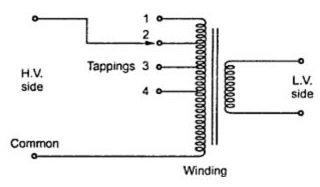Transformer taps, efficiency, and parallel connections are essential concepts in electrical engineering. This article provides an in-depth look at how transformer taps are used to regulate voltage, the reasons behind a transformer’s high efficiency, and the considerations for connecting transformers in parallel.
Table of Contents
What is a Transformer Tap?
Some high voltage transformers are equipped with taps. These taps are used to adjust for high and low voltage conditions and provide a specified voltage output at the secondary terminal. The tap is usually set to be 5% above or below the specified primary voltage to accommodate both high and low voltage conditions.

For example, if a transformer is rated at 480 volts on the primary side and operates at 504 volts on the line voltage, the primary tap should be set 5% higher to maintain the correct voltage rating on the secondary side.
Difference: What Is the Difference Between Insulating, Isolating, and Shield Winding in Transformers?
Insulating and Isolating transformers are essentially the same. These terms are used to describe the insulation or separation between the primary and secondary windings of a transformer. A shielded winding transformer is designed with a metallic shield between the primary and secondary windings, which significantly reduces noise.
Typically, transformers with two, three, or four windings are of the insulating or isolating type. Only auto-transformers do not have insulation, as their primary and secondary windings are electrically connected.
Can a Transformer Operate at a Voltage Different from the One on the Nameplate?
In some cases, a transformer can be operated at a lower voltage than what is specified on the nameplate. However, if the transformer does not have taps, it should not be operated at a higher voltage than what is specified.
If a transformer is operated at a lower voltage than specified, its KVA rating will decrease. For example, if a transformer has a primary voltage of 480 volts and a secondary voltage of 240 volts, but is operated at 240 volts, the secondary voltage will drop to 120 volts.
In this case, the transformer’s rating will decrease from 10 KVA to 5 KVA or in proportion to the voltage applied.
Why Do Transformers Have High Efficiency?
A transformer is a stationary device with no rotating parts, so there is no frictional loss. As a result, transformers have much lower losses compared to other rotating machines, which is why they are highly efficient, typically achieving 95% to 98% efficiency.
Can Transformers Be Connected in Parallel?
In the case of single-phase transformers, parallel connections can be used, but their impedance and voltage must be equal.
If the voltages of two transformers are not equal, the circulating current in the close network will generate excessive heat and reduce the transformer’s lifespan. The impedance of each transformer must be within 7.5% of each other.
For example, if Transformer A has an impedance of 4%, then Transformer B should have an impedance between 3.5% and 4% to be connected in parallel. The same precautions should be taken when connecting three-phase transformers in parallel, and the phase and phase angles of the two transformers must be equal.



